get off the train, cross the street to a small convenience store where you can buy a bus ticket. The fare is 6 euros, and in just over an hour, you’ll arrive in the Republic of San Marino.
San Marino’s full official name is “The Most Serene Republic of San Marino.” It dates back to the 3rd century when a stonemason named Marinus, involved in building city walls, founded an independent monastic community on Mount Titano. Over time, that community evolved into a constitutional state, making San Marino one of the world’s earliest constitutional republics.
San Marino is the fifth smallest country in the world, preceded only by Vatican City, Monaco, Nauru, and Tuvalu.
San Marino is so small you can’t even see it on the map. This tiny country perched on a mountaintop is like a real-life floating city. The rare mountain cloud sea makes this, Europe’s third smallest country, look even more stunning up in the clouds.
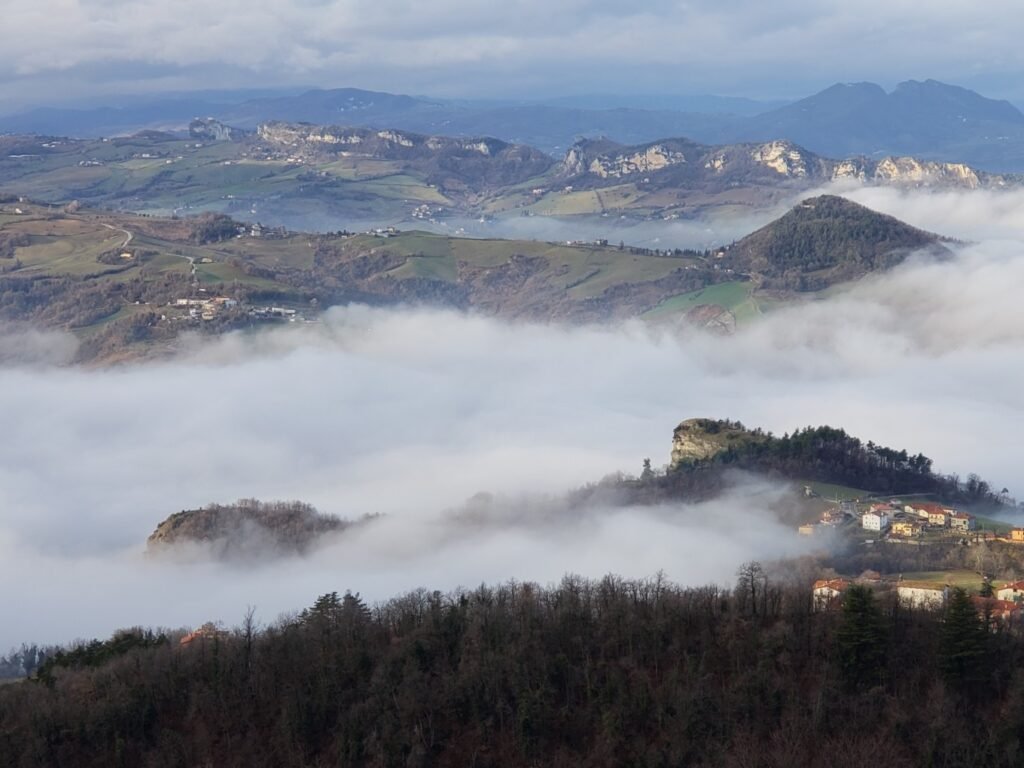
San Marino Guard
San Marino’s military force is one of the smallest in the world. Their frontline unit, known as the Rock Guard (Guardia di Rocca), is responsible for patrolling and securing the country’s borders. In addition to border protection, they also guard government institutions, ensuring the safety of the republic’s key offices and officials.
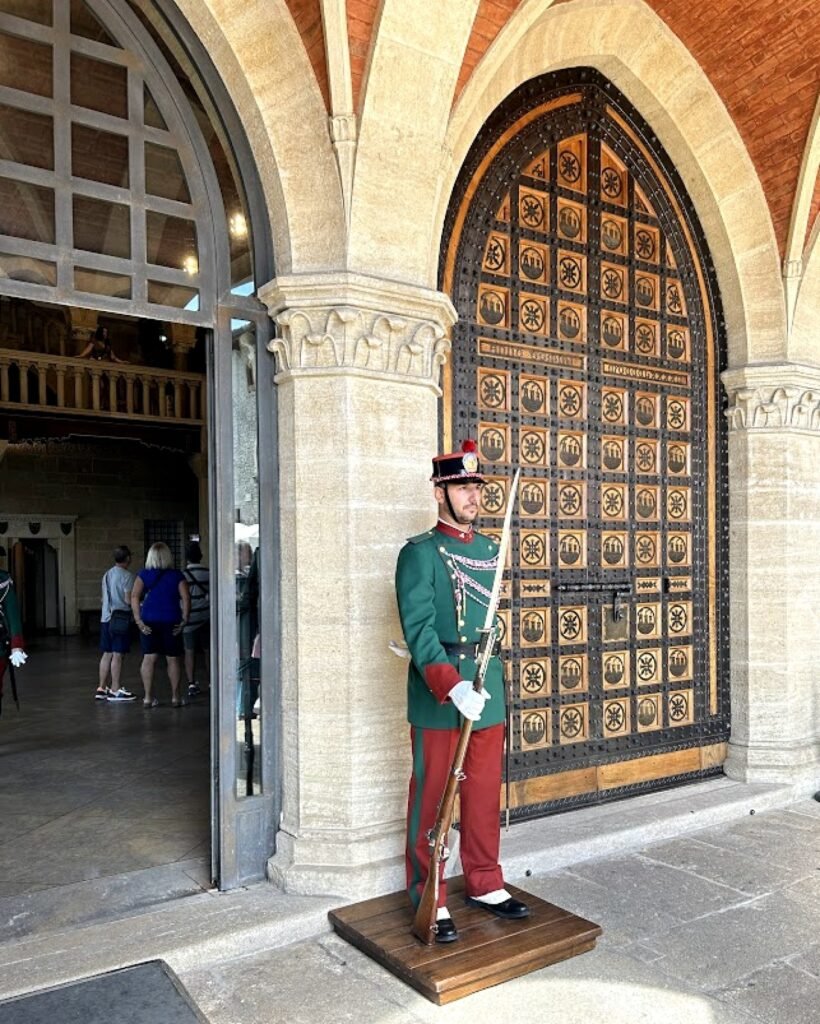
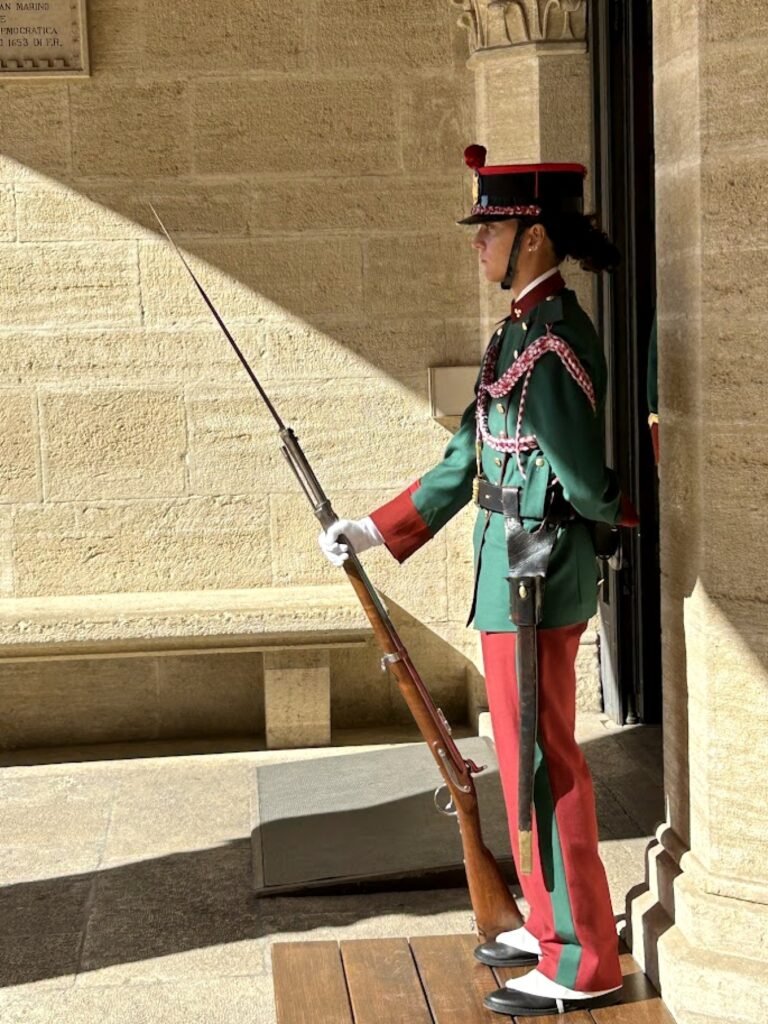
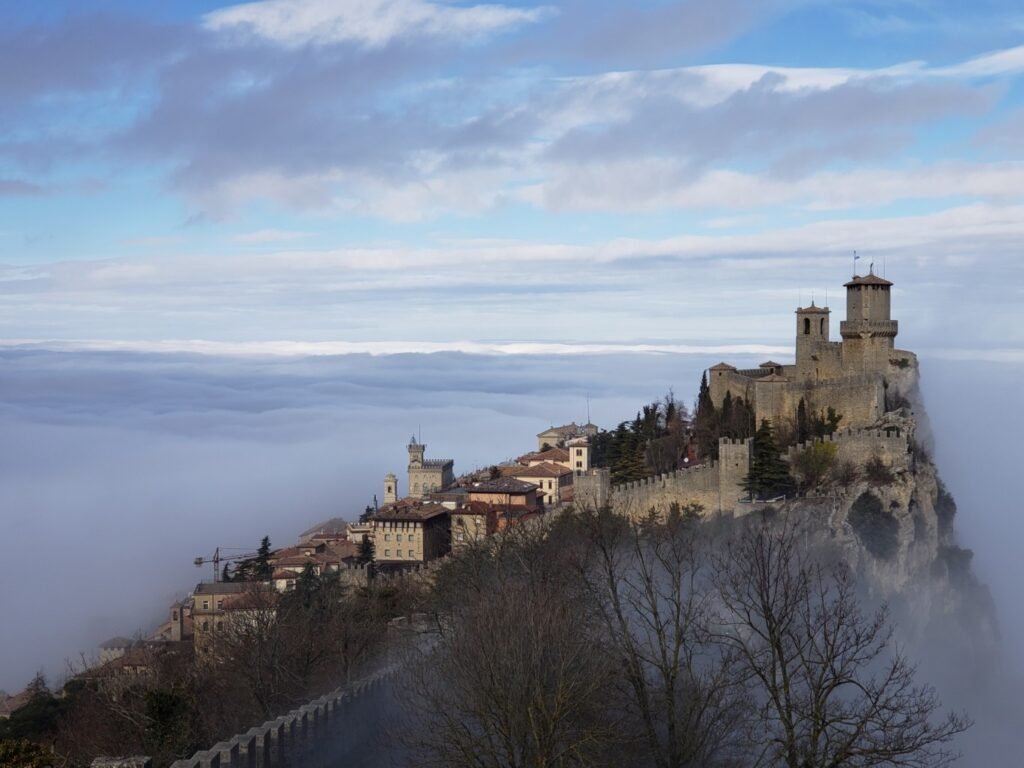
Key Historical Milestones of San Marino Over 700 Years
San Marino, founded in 1296, has a history spanning over 700 years. Remarkably, it has only been occupied by a foreign power once, and that was by the Roman Empire—but the occupation lasted just six months, back in 1503.
Throughout its history, San Marino faced several invasion attempts. However, each time invaders approached, the fortress towers—like the ones pictured—would sound the alarm, summoning the local militia to take up arms and defend the city walls. Thanks to their resilience, San Marino repeatedly overcame these threats and remained unconquered for centuries.
In truth, Italy could have easily annexed San Marino. Yet, one pivotal moment in history explains why this small state has remained independent within the heart of Italy. In the 16th century, Giuseppe Garibaldi, a renowned Italian general and politician, sought refuge in one of San Marino’s fortresses after being defeated by Austria. Grateful for San Marino’s help, Italy never harbored ambitions of annexing the microstate, even though Italy absorbed many other small states in the region—Rimini, at the time, was also an independent state.
In 1796, Napoleon’s French army conquered much of Italy. Since San Marino was a country within Italian territory, French envoys visited the republic. To San Marino’s surprise, the French government declared that it respected the state’s policies and governance, and the French Republic extended a promise of peace and eternal friendship, ensuring that San Marino would remain untouched by French occupation.
One recorded event demonstrates San Marino’s wisdom and foresight. Napoleon, in a gesture of goodwill, offered to gift the city of Rimini to San Marino. This would have given the microstate a seaport, allowing it to break free from its landlocked status. However, San Marino’s leaders declined the offer with these words:
“We are deeply grateful for Napoleon’s kindness, but this land is the only inheritance left to us by our ancestors. We are content with our small territory and have no ambition to expand, as we fear it might jeopardize our independence in the future.”
This decision proved wise. Had San Marino accepted the offer, its fate after Napoleon’s defeat at Waterloo might have been very different—San Marino, as we know it today, may not have survived.
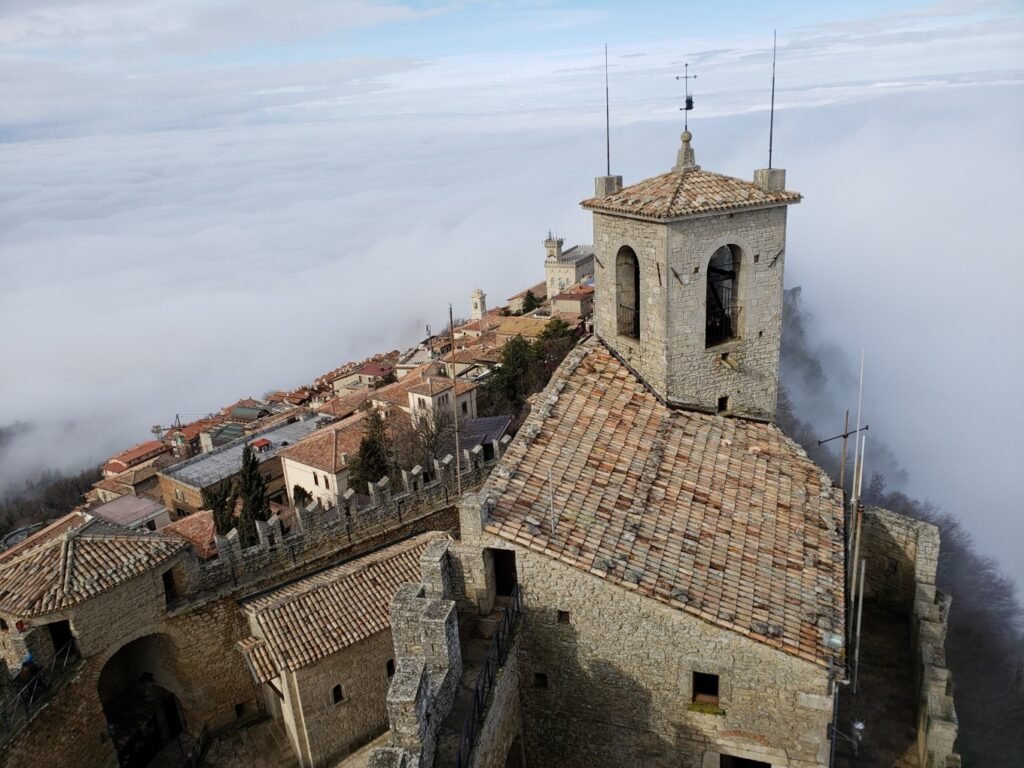
Before entering the city gate, I stood on the platform in the parking lot for a long time, gazing into the distance. The rolling mountains in the far-off view weren’t too steep; instead, they looked like they were covered with a green carpet. Between the valleys, there was a swirling sea of clouds, gently flowing and incredibly soothing.
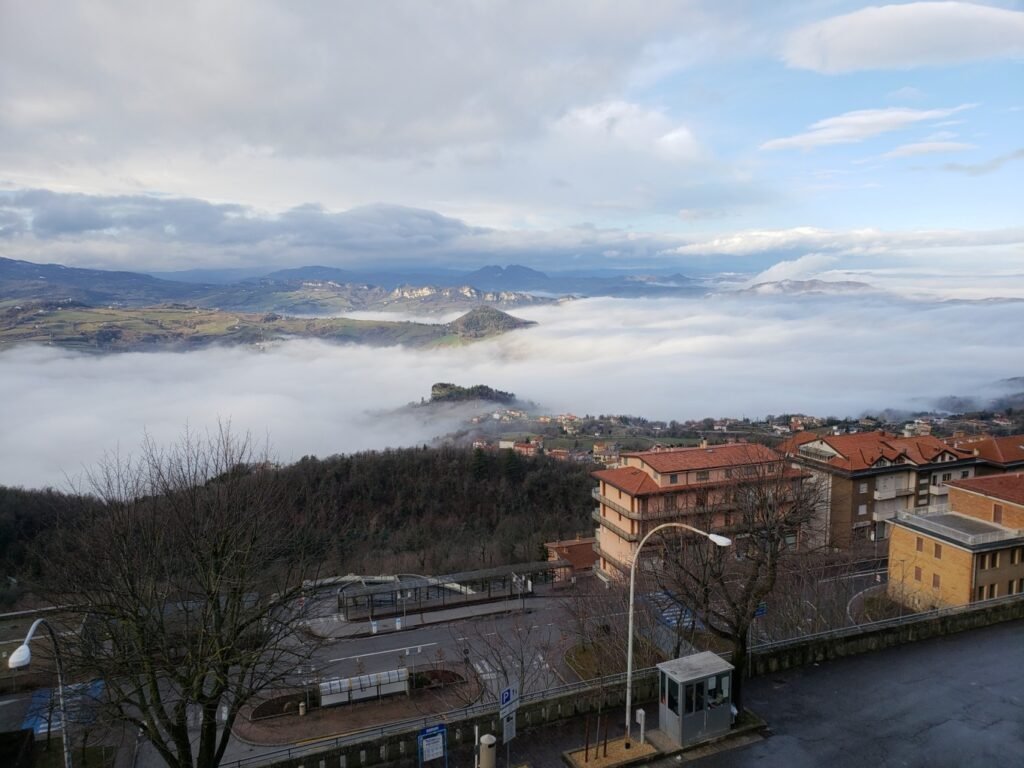
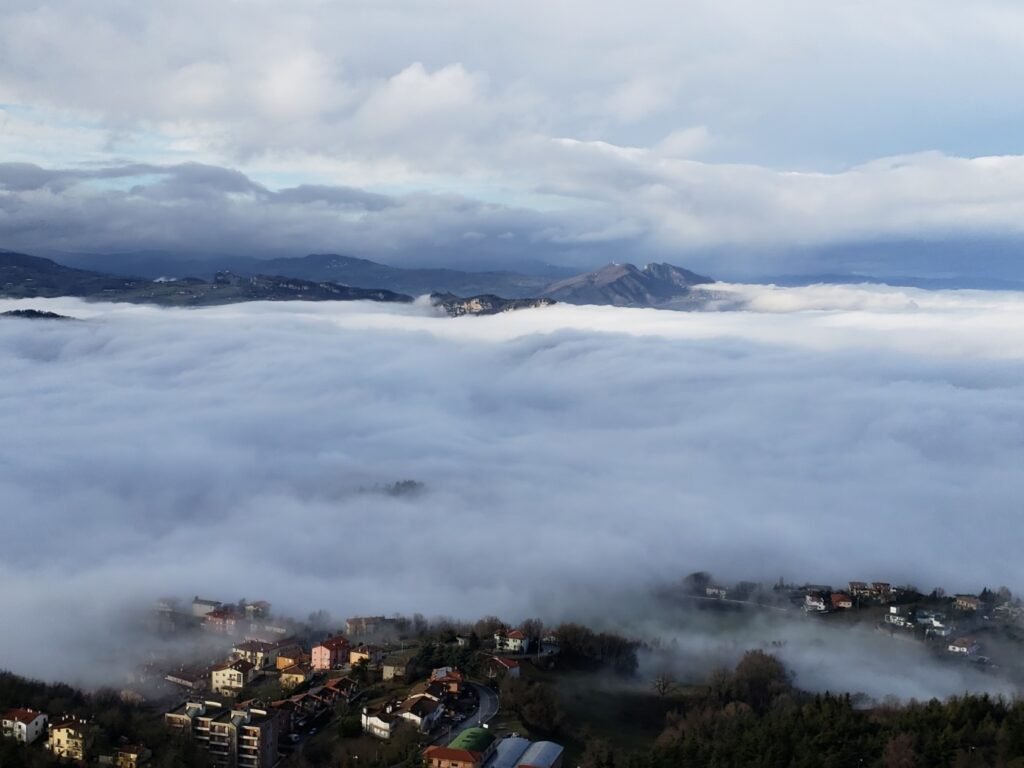
At the summit of Mount Titano stand three fortress towers: Guaita, Cesta, and Montale. These towers, key symbols of San Marino’s heritage, are prominently featured on both the national flag and the coat of arms of the republic.
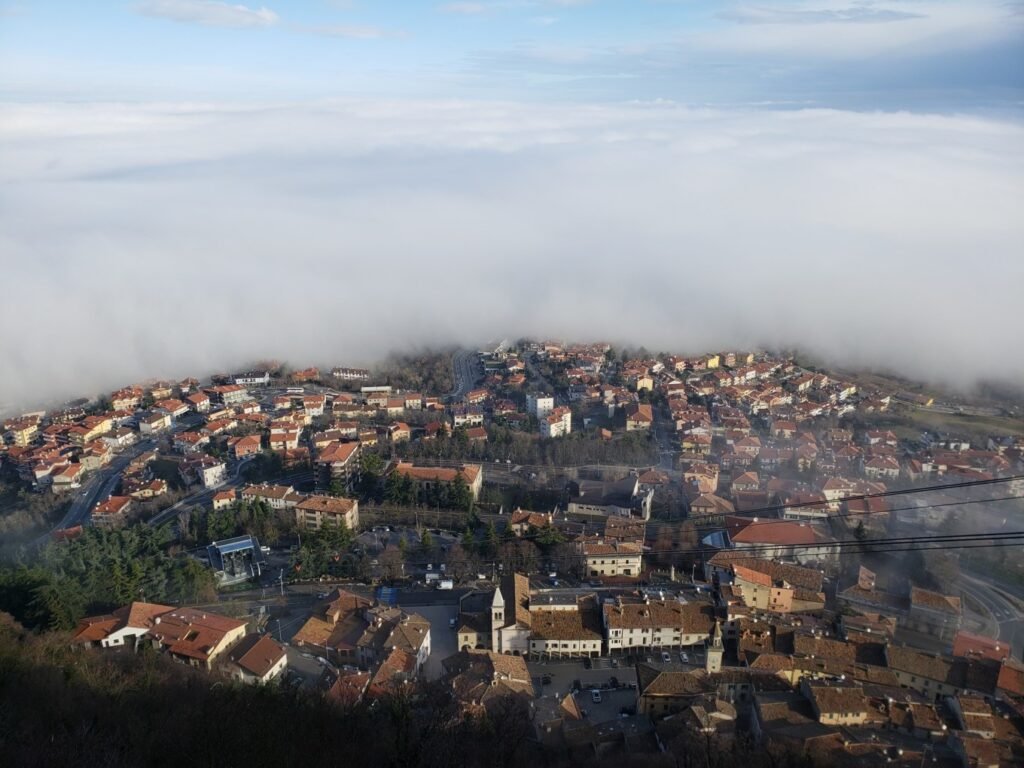
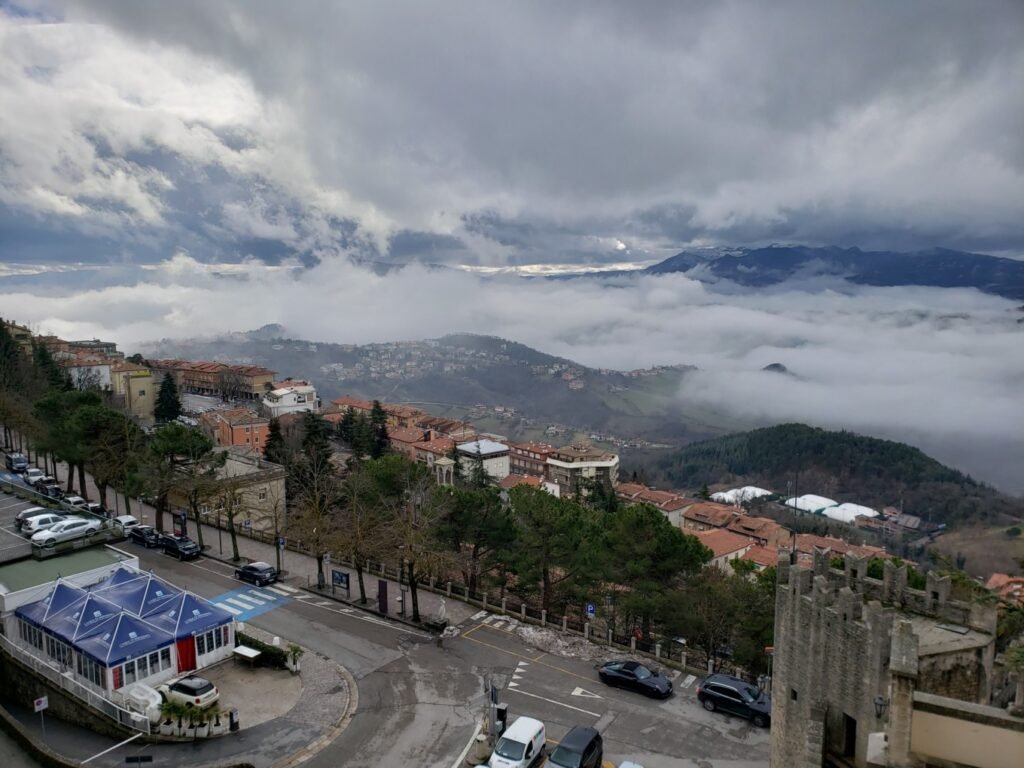
After entering the city gate, the official tour began along the winding uphill path. San Marino has a cable car that runs from the town of Maggiore at the base of the mountain up to the visitor center halfway up. However, the cable car isn’t open during the off-season. When I walked by, the town at the base was still clearly visible. Suddenly, the clouds and mist surged like a massive wave from a tsunami, swallowing the town whole. Only a lonely cable car cable remained emerging from the fog, creating a truly mystical and elusive scene.
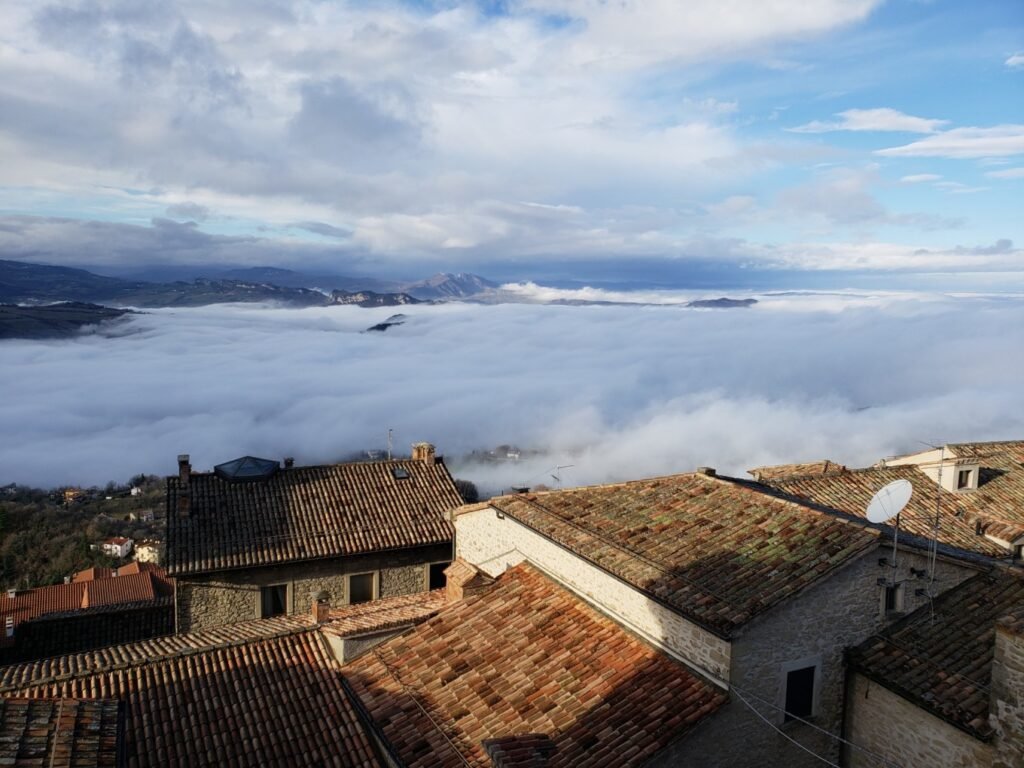
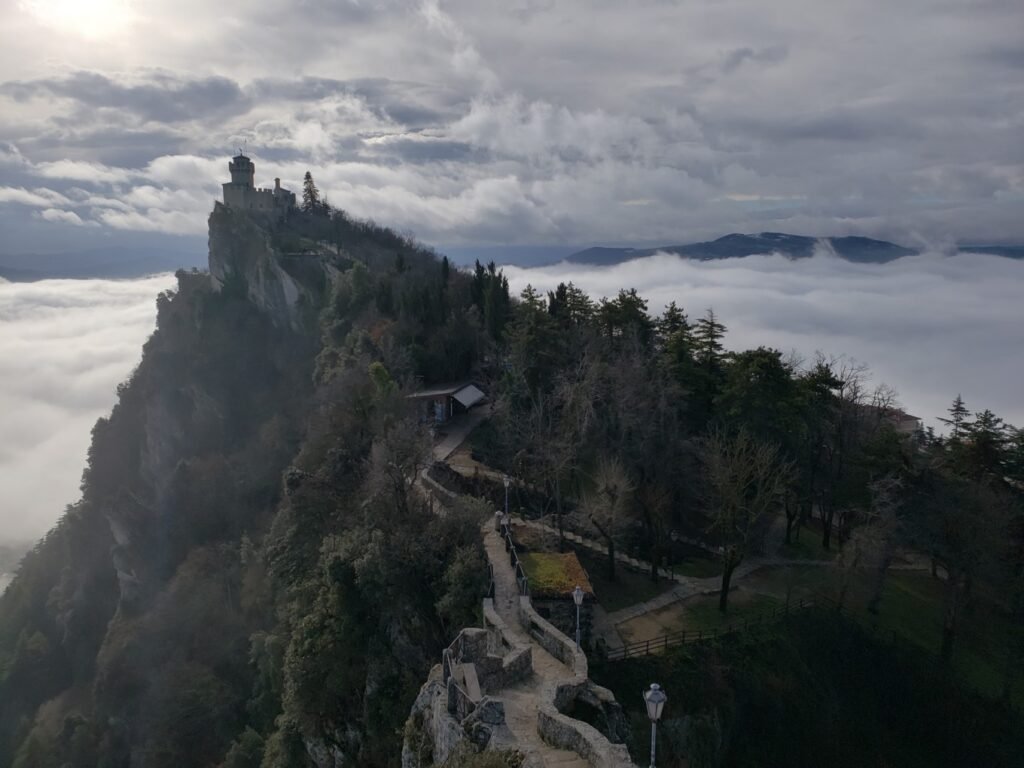
The San Marino Basilica sits atop Mount Titano and is a Roman Catholic church built in the Neoclassical style. Unlike many other Catholic churches, this basilica avoids excessive ornamentation. The exterior is made of light yellow marble, while the interior features pure white carvings, giving the entire space a solemn and elegant feel.
If you’ve grown weary of the intricate, elaborate cathedrals typical of Western Europe, this basilica offers a refreshing change. Inside, the relics of Saint Marinus, the founder of San Marino, are enshrined. The church’s clean, minimalistic exterior—with no unnecessary decorations—commands a sense of reverence and admiration.
The square in front of the church is eerily quiet, with only an old woman sweeping the steps. The winter sun adds a touch of warmth to the scene. Pushing open the side door of the church, you find a serene and solemn interior. Below the altar, there’s a small urn said to hold the remains of the stonemason Marino. The country even celebrates the stonemason’s death day as its national holiday.
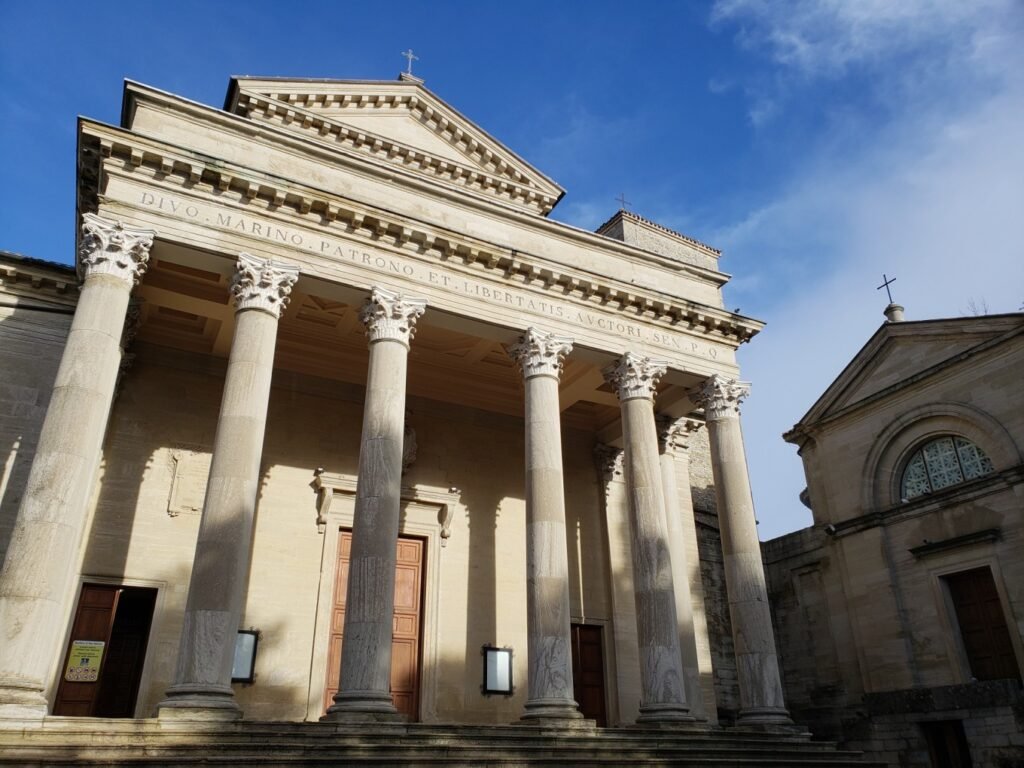
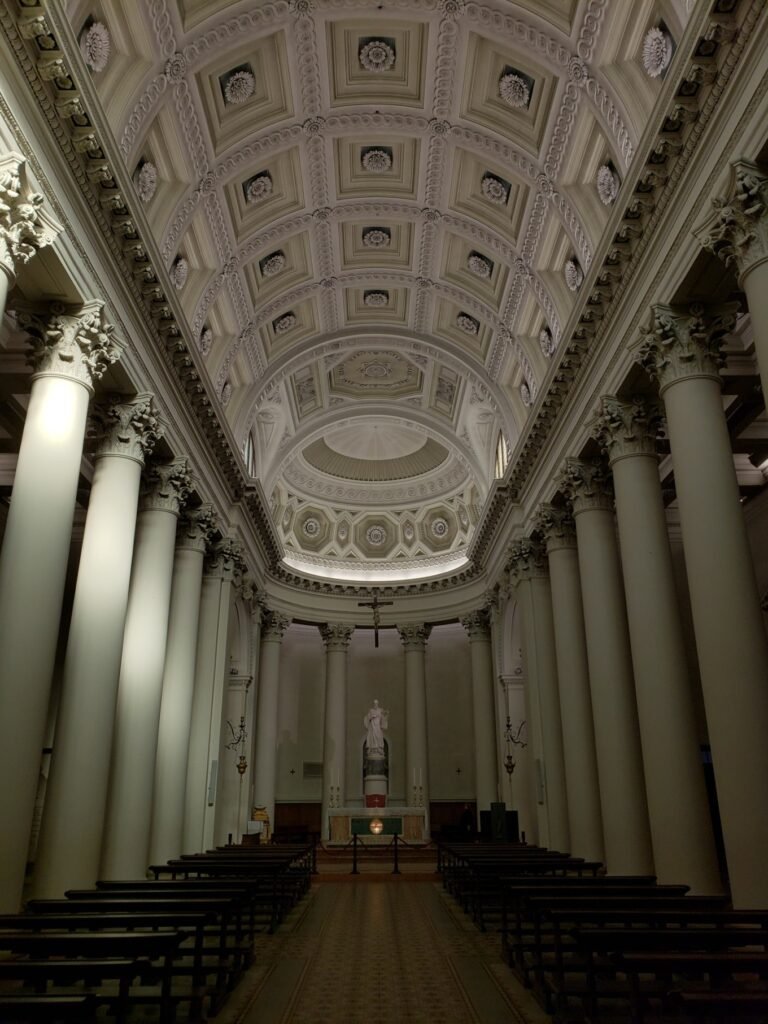
San Marino attracts millions of visitors each year, with a record-breaking 150 million tourists in 2011. It’s truly a destination worth visiting, not just for its scenic beauty but also for its rich history.


